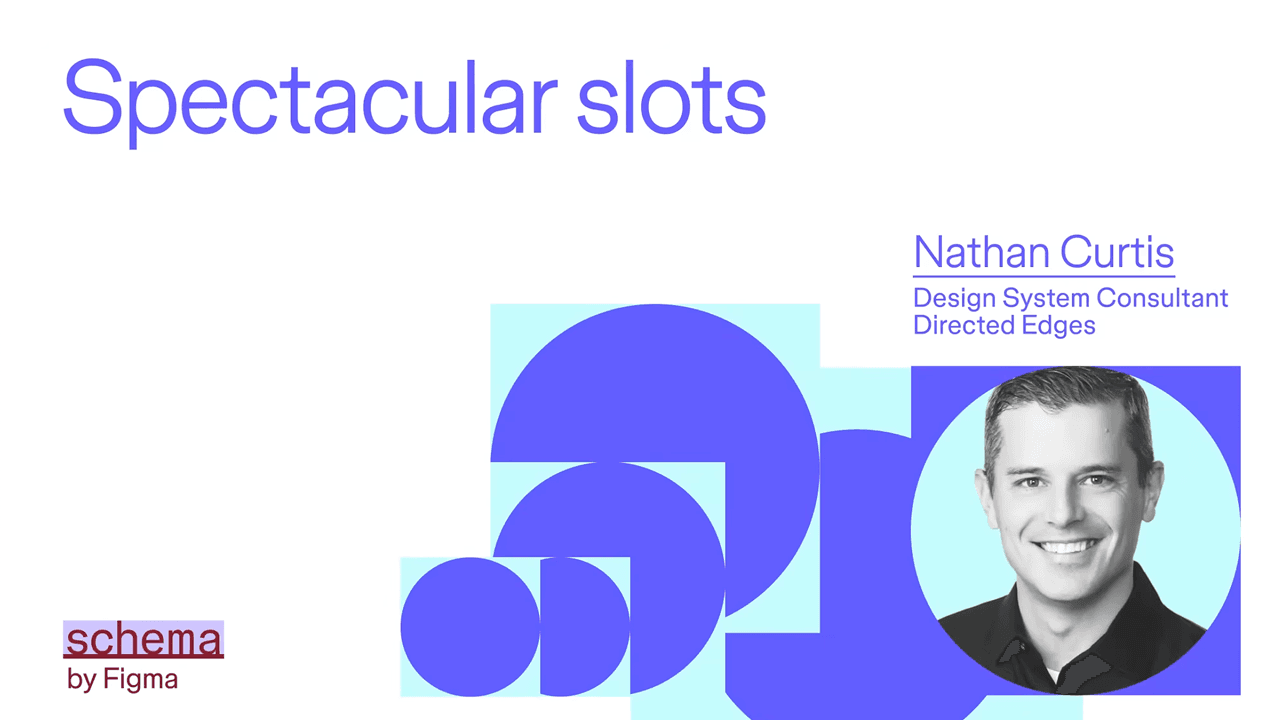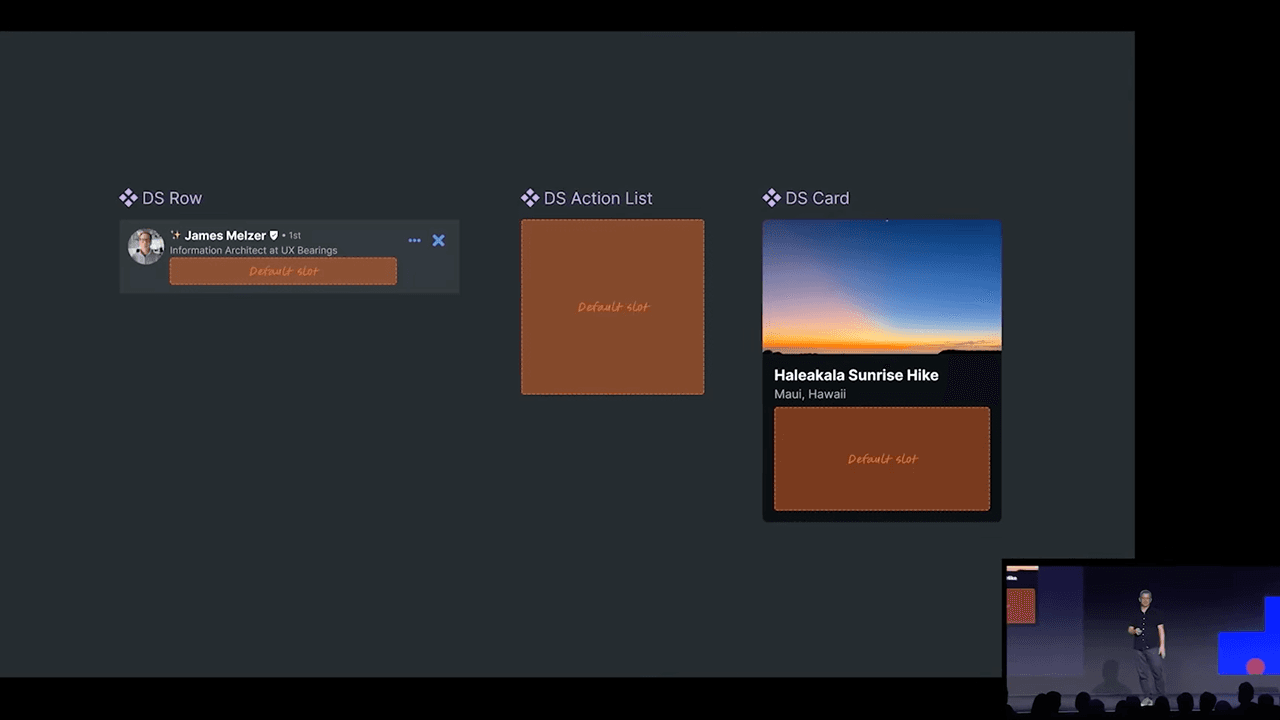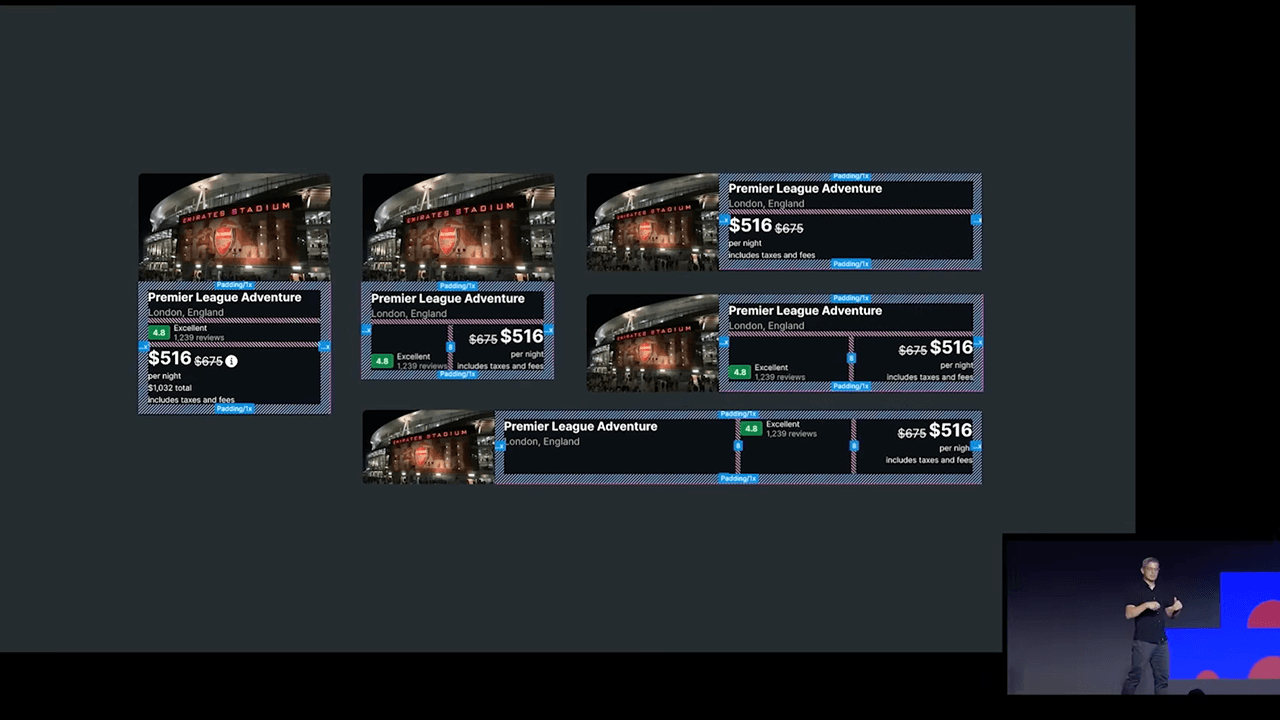November 12, 2025
•4 min read
The Architecture Reboot: Why Figma Slots is Design System Kryptonite
This strategic blog post uses the release of Figma's Slots feature to eliminate outdated component hacks and champion true composability. Framed as a personal story from an eager Design System Lead, the article positions the author as the ideal candidate to immediately lead an architecture reboot using this game-changing technology.

I was not at Schema 2025. I was sitting on my couch, witnessing a revolution.
It was a cold November morning, still buzzing from the energy of Schema 2025. I’d poured a second cup of coffee, pulled up Nathan Curtis’s session on YouTube—Introducing Slots—and settled in.
I’ve spent years building and refining design systems, always dealing with the same inherent tension: the battle between rigidity (for consistency) and flexibility (for designer empowerment). Every system architect knows the universal hack we’ve all relied on: the clumsy, layered structure using a "pseudo-slot component."
As I watched the video, that familiar hack dissolved on screen, replaced by a clean, pure placeholder. In that moment, I realized this wasn't just a new feature; it was a philosophical shift that validated years of frustration.
The End of the "Pseudo-Slot" Era
For too long, scaling a complex component—a Card, a Modal, or a List Group—meant compromise. We tried to give designers flexibility, but the process was painful:
- It required user education on how to swap instances, adding unnecessary friction.
- It forced designers to dive into the layer panel to manually show/hide elements, a clunky process that caused file bloat and was prone to error.
- It led to immediate component detachment whenever a designer needed to do something truly bespoke, breaking the system we worked so hard to maintain.

Slots finally deliver on the promise: complex setups, simplified usage. They allow us to move from a frustrating, "configuration-only" approach to a true strategy that embraces both:
PRINCIPLE: Make the common configurable and make the uncommon composable.
Configuration (Props): For elements that need standardization (e.g., button size, color variants).
Composition (Slots): For dynamic, experimental, or diverse content (e.g., pricing tables, custom CTA arrangements) that needs to live inside the component’s structure without breaking it. Crucially, Slots use 'Default Slot Content' to ensure consistency is maintained even when flexibility is offered.

🎯 My Mission: Leading the Architecture Reboot
I’m still tracking the rollout—announced at Schema 2025 with talk of a launch around the end of November. Every day this feature remains locked away, every YouTube video I watch of it, fuels my desire to get in the game.
I am not just interested in using Figma Slots; I am prepared to lead the strategic overhaul this feature demands. My goal is to join a forward-thinking team that is ready to deploy this advanced feature immediately, allowing me to leverage my deep understanding of the system's strategic benefits:
- MAXIMIZE System Impact: Moving beyond just low-order components to utilize nested capabilities for creating controlled, high-level layout systems and full page templates, expanding the design system’s authority.
- EMPOWER Composition: Architecting solutions that teach product teams to use slots effectively for high-value arrangements (like merchandising and complex pricing displays) that simply weren't manageable with simple props.
- FUTURE-PROOF Deliverables: Leading the shift toward focusing on “ready-made examples”—the necessary documentation that guides designers on the intended and safe uses of this new flexibility, rather than just delivering the asset alone.

I am seeking a role where my passion for component architecture can meet this monumental shift in technology. If your team is serious about moving beyond workarounds and embracing true composability, my experience is the key to your immediate architectural success. I am ready to build your next-generation system now.

The future of design systems is composable. I’m ready to start building it.